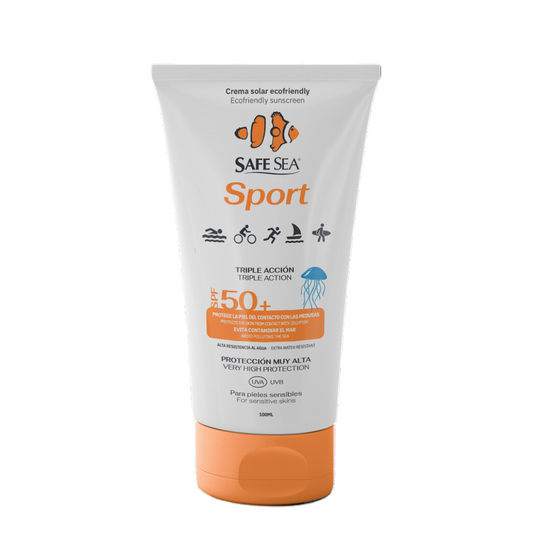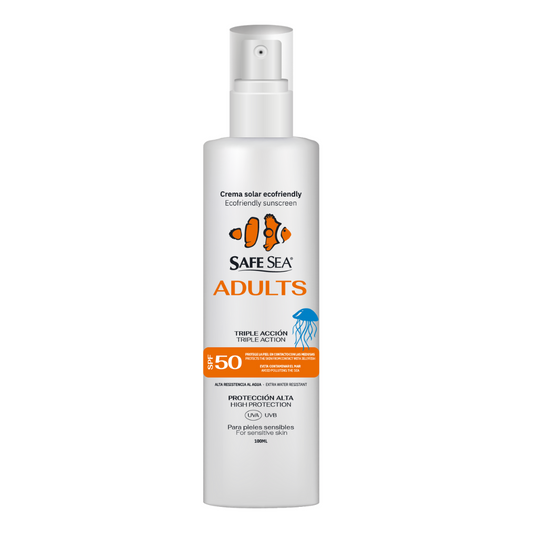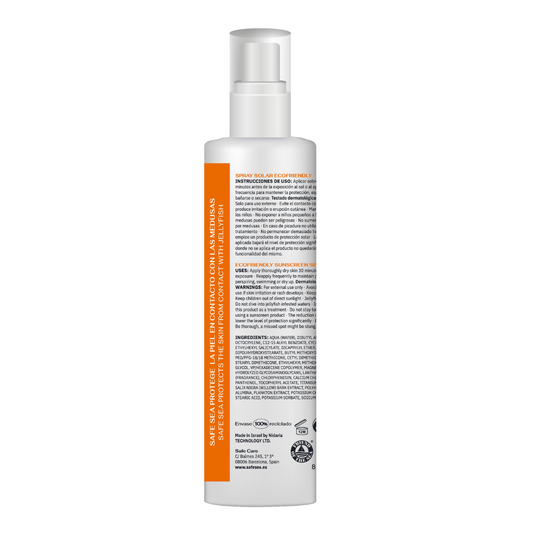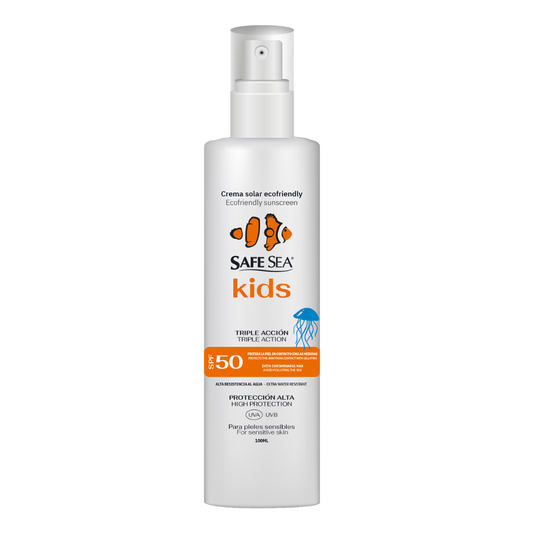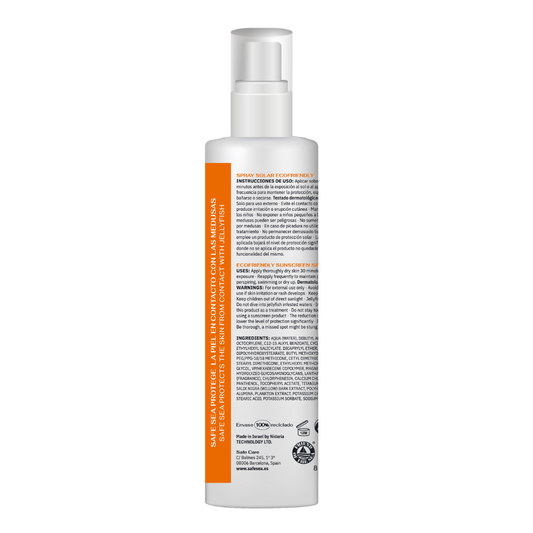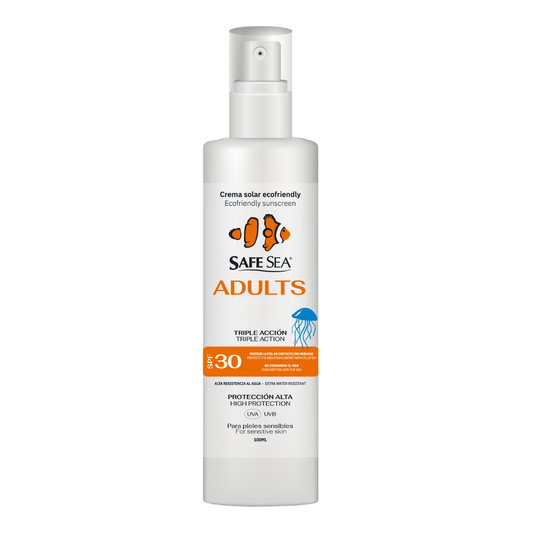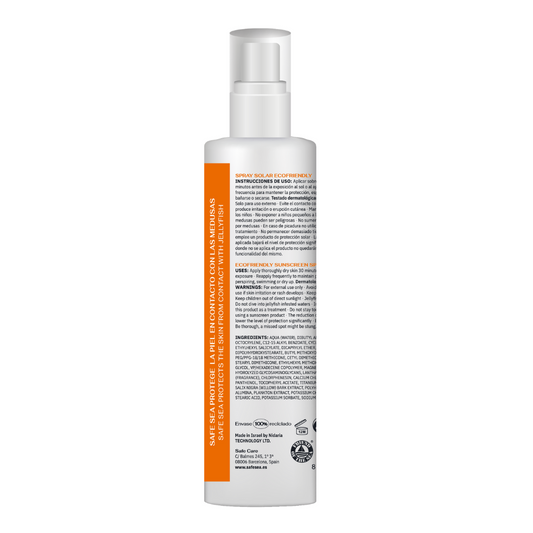The only environmentally friendly sun cream

As you have probably seen on our social networks, Safe Sea is an environmentally friendly sunscreen. This is accredited by the international NGO Friend of the Sea. An organization whose objective is the humanitarian and environmental conservation mission. Friend of the Sea has become the leading certification standard for products and services that respect and protect the marine environment.
Here we explain in detail why Safe Sea is the only sunscreen on the market accredited as Ecofriendly by this institution:
Why is Safe Sea an environmentally friendly sunscreen?
Its waterproof formula does not release active ingredients in the sea.
The figures are alarming. Every year, between 6,000 and 14,000 tons of sunscreen are dumped into the seas and oceans. Most sunscreens release up to 25% of their active chemicals into the water. This seriously damages the fauna and flora of the marine environment. Faced with this worrying problem, SAFE SEA has developed an environmentally friendly sunscreen. It does not release chemical active ingredients that pollute the water. This innovation comes from the biotechnology company Nidaria Technology Ltd, a world leader in the development of the latest generation of sunscreens.
Play the video below and compare the water resistance of Safe Sea environmentally friendly sunscreen with another leading brand on the market. You will be surprised by the result!
Dr. Amit Lotan, CEO of Nidaria Tecnology, confirms that SAFE SEA sunscreen releases less than 5% of active ingredients into the water, through a scientific test, certified by the "Friend of the Sea" association. Here we explain what this experiment consists of. Don't miss it!
Guaranteed by scientific evidence
The biologist and CEO of Nidaria Technology Ltd, Amit Lotan, together with his research team, developed a scientific test establishing that the SAFE SEA sunscreen formula releases less than 5% of its active chemicals when it comes into contact with water. Here is one version
To do this, Dr. Lotan sprays SAFE SEA and another recognized brand name protectant on two papers marked with a soluble ink "Smiley". He then immerses both papers under water for 10 minutes. After that time, compare the result between the two marks and see that the soluble ink covered with the name-brand protector has dissolved, while the SAFE SEA-covered "Smiley" remains almost intact. In this video from Crazy Haacks you can see the replica of the experiment:
This is how Dr. Lotan proves that SAFE SEA is water resistant. And he confirms that it releases only 5% of its active ingredients in seas and oceans. Unlike other brand-name sunscreens, which release up to 25% of active ingredients.
DOES NOT contain the toxic Oxybenzone.
This is another element to consider on how to know if a sunscreen is Eco Friendly. It is recommended to look among its ingredients to see if it contains Oxybenzone. SAFE SEA, besides being a sunscreen that does not release active ingredients into the water, does not contain Oxybenzone. It is also known by the name BP-3 or Benzophenone-3. It is a chemical substance that is currently present in more than 3,500 sunscreen products worldwide. It also leads the ranking of chemical actives that endanger marine wildlife and coral reefs. Contributes to coral bleaching and reef deformation by affecting DNA and disrupting the reproduction and growth of coral reefs. reproduction and growth of corals.and growthof corals.
After these explanations and after observing the results obtained in the scientific test supported by "Friend of the Sea", we can conclude that SAFE SEA is a unique sunscreen on the market due to its triple protective effect: it protects the skin from the sun, protects the environment and also helps to prevent jellyfish stings. According to experts, it is undoubtedly a bet for the future in the development of sun protection.


